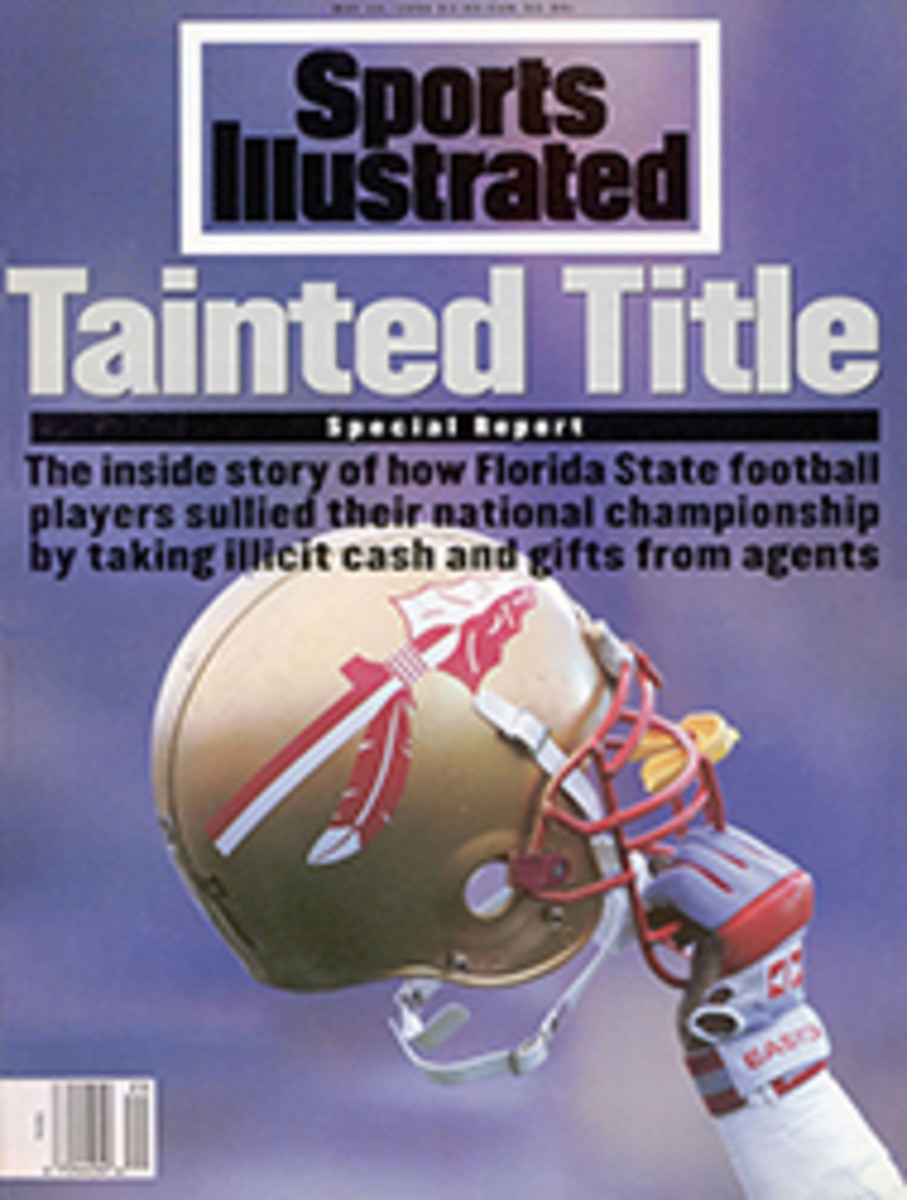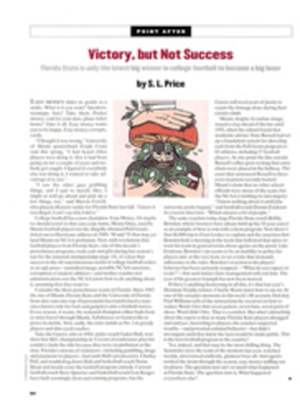
Lord of the Flies
To his unsuspecting neighbors Robert (Buck) Metz is just another chicken farmer, which is fine with him. He would rather not draw attention to his most precious birds, hidden away in central Pennsylvania's Kishacoquillas Valley, a fertile, undulating landscape of gurgling trout streams and quilted fields tended by Amish and Mennonite farmers. True, Metz dutifully hatches his share of broiler chicks, but the chickens he prizes most—the ones that have bestowed upon him a measure of celebrity beyond the valley—produce neither eggs nor meat.
What these chickens produce is feathers, respectfully called hackle by anglers who tie them into flies. Indeed, in the realm of fly-fishing, Metz rules the roost as the undisputed Feather King. Through meticulous breeding, Metz has raised chickens whose plumage possesses precisely those qualities sought by anglers from the Cascades to the Catskills—long, narrow feathers with short, dense fibers, a brilliant sheen, stubborn buoyancy and enough flexibility to be wound around the tiniest hooks.
Metz's two farms—one is 125 acres, the other 30—supply well over half the world's fly-tying hackle. Annually, Metz raises some 120,000 "feather chickens," enough for a staggering 16 million flies. Not only does he supply feathers to sporting-goods giants L.L. Bean and Orvis, but he also ships his wares to 22 foreign distributors. Japan is a voracious consumer of Metz's feathers. He even has a distributor in the tiny European principality of Andorra. Some of his Pennsylvania plumage is tied into flies in Sri Lanka and Thailand, only to end up riding a riffle just down the road from his farms.
"His name recognition among flytiers would be the same as Ford's among car owners," says Dan Shields, part owner of Flyfisher's Paradise, a store in State College, Pa. "When Metz speaks, people listen," says Tom McMillan, a buyer for Orvis. Why, Metz so inspired and encouraged one fledgling flytier that he invited Metz to fish with him at Camp David, Md., the presidential retreat. The tier was Jimmy Carter.
Metz, 52, is a straight-talking man who wears blue jeans and faded workshirts. His brown beard is patched with white; his hands are raw and scratched from gripping too many feisty roosters; and his eyes are puffy from long hours of selecting next season's breeders. In his office—part of a former Swiss-cheese factory—stand four stuffed roosters. On a wall hangs a six-pound brook trout that Metz caught in Labrador years ago. High on a bookshelf are copies of Who's Who in the Egg and Poultry Industry, and half-hidden in the corner is this sign: DAMN, I'M GOOD!
Metz grew up in this valley as the son of a second-generation poultry farmer. After he graduated from Cornell with a degree in agricultural economics as well as an M.B.A., he did a stint in Cincinnati with Procter & Gamble, buying tubes for Crest toothpaste, cans for Folger's coffee and bottles for Clorox. Fed up with city and corporate life, he returned to the big valley, as locals call it, to become a poultry farmer himself. Then, in the summer of 1969, at age 27, Metz went fly-fishing with a buddy on Penns Creek near State College. That was the first time he had held a fly rod. His life hasn't been the same since.
Soon Metz was tying his own flies, a thousand a year. He used only his own hackle. "It offended my sense of values to send halfway across the country to buy chicken feathers when I'm in the chicken business," he says. And so began his quest for the perfect hackle. "I was looking in people's barnyards for good chickens," he recalls. "It was sort of like being on a treasure hunt."
In 1972 Metz and his friend George Harvey, who taught fly-fishing at nearby Penn State, drove to Minnesota to visit Andy Miner, a lawyer and angler whose hobby was raising chickens for their feathers. As a present Miner gave Metz 144 fertile eggs. From these hatched 82 chicks, which launched Metz on what was at first a hobby, then a business and finally an obsession. Metz's father, brother and uncle had misgivings about the venture. Says Metz, "They just sort of chuckled under their breath and agreed to let me fool around with this and hoped it didn't get in the way of the real business"—hatching broilers.
The next year, Metz stuffed the saddlebags of his BMW 750 motorcycle with his chickens' capes—hackle with the skin attached—and headed for Manchester, Vt., home of Orvis. There, he recalls, "I said to a clerk, 'I want to see somebody about these feathers.' He looked at [what was in] my hand and said, 'I'll bet you do.' " Out came the manager. "He was completely astounded," says Metz, who soon afterward contracted to sell Orvis his entire production. And since then, he has sold every feather he has produced.
To grasp the magnitude of Metz's operation, one should stand at the entrance to his larger farm's Building No. 4 (12 of the farm's 18 buildings house birds raised for hackle; broilers live in the remaining six), which is nearly the length of two football fields. Inside is the deafening crowing of 13,000 sexually mature and rowdy roosters, each named for its color: blue dun, light cream, ginger, grizzly. Each rooster has his own cage. The feed—it's Metz's secret mixture, designed to enhance plumage—is carried by conveyor belt beneath the cage bottoms, a movable feast of nutrient-rich pellets. By chicken standards, this is the Ritz. The birds have neither the need nor the opportunity to poke their heads through their cages; this prevents them from fraying the luxurious capes for which they have been bred.
Of course the pampering ends with maturity, when the birds are about 10 months old. "I usually use the word harvest," says Metz, "but I must admit they end up pretty dead." Indeed they do, gassed with carbon dioxide because slitting their throats would bloody the feathers. The carcasses are pinned to pine boards in a storage room kept at a chill 42°, which makes their bodily fluids congeal before they come under the blades of the chicken skinners.
Metz's prime asset is his breeding stock, the product of extensive genetic experimentation. Each bird's characteristics are recorded on a computer and in notebooks. Sires and dams are graded, matched and mated for color and feather quality of their plumage. Too much absorbent webbing—the soft downy material on the barbules of feathers—can quickly reduce an aristocratic dry fly to something resembling a drowned mouse.
Metz takes extraordinary measures to protect his flocks and the genetic secrets they represent. To minimize the risk of fire's wiping out his breeders, he maintains two breeding operations in separate buildings so that flames from one will not imperil the other. And in an attempt to keep his birds healthy, he forbids employees to keep other birds as pets—be they parakeets or Easter chicks. Even visits to other poultry operations are banned, lest employees return with diseases and expose Metz's flocks.
To minimize the transmission of disease within the farm, most employees are restricted to working within a single building. Those who frequent more than one area must change into fresh coveralls. Outsiders are politely turned away, including local schoolchildren seeking a tour.
On occasion an unknowing fisherman, hoping to raise a chicken or two of his own, will request an egg or a bird from Metz. Nothing doing, says Metz. "Basically, there isn't anything that leaves the farm unless it's dead," he says. On the farm any movement of eggs requires the signatures of two employees, written out in the presence of the breeding-house caretaker.
There are other precautions as well. Some employees live in dwellings among Metz's chickenhouses, acting as resident guards. "All the employees are aware of the value of the stock they are working with," says Metz. "They keep their eyes and ears open for anything abnormal. They are our first line of defense."
Finally, there is nothing to indicate which houses hold the exotic "feather birds" and which contain the common chicks raised for meat. His family still sells 20 million day-old chicks a year, each one fetching 22 cents and bound eventually for the dinner table. But Metz's premier feather birds sell for $59 per cape at the retail market and gross $2 million a year. No wonder one envious angler dubbed Metz's spread Hackle Heaven.
Even Metz sometimes spots a cape he can't resist and quietly stashes it away in his drawer of tying materials. But then, these days he has little time for fishing, much less for tying flies.
TWO PHOTOS
AL TIELEMANS
Metz crows over a Cree; other breeds provide feathers for a Royal Wulff.
PHOTO
AL TIELEMANS
Though Metz lives near some fine trout streams, he rarely has the time to cast the flies he ties.
Ted Gup is a free-lance writer and avid fly-fisherman based in Chevy Chase, Md.

